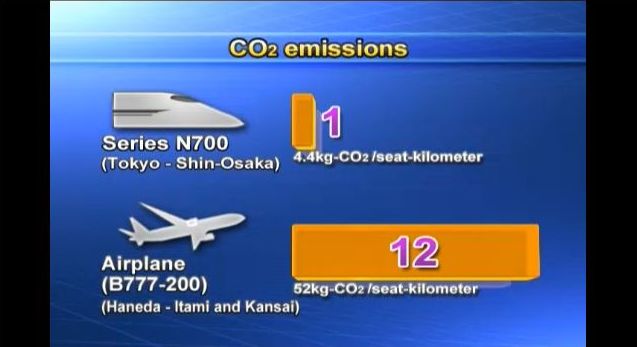Can a train really go as fast as 600 km/h? It can, obviously, since it has done so in spring of 2015: The record-breaking speed had been achieved by Japan’s Maglev bullet train in a test run by its developer Central Japan Railway Company. Instead of sitting on regular tracks, the superconducting Maglev hovers above them, enabling frictionless and low-noise movement by „magnetic levitation“ = Maglev. Thus the breathtaking tempo. If all goes well and according to the company’s ambitious plans, Tokyo will be connected with Nagoya within as little as 40 minutes by 2027. At present, the ride takes twice as long. Another two decades ahead, by 2045, travel time for the total distance from Tokyo to Osaka might shrink from 142 to sensational 67 minutes.
„Regular“ Shinkansen have been successfully cannonballing through the nation for fifty years.
Japanese bullet trains: Whizzing along the fast track since 1964
The Japan Railway Company is divided into six regions operating independently. One of them – the Central Japan Railway Company – services cities aligned along Nippon’s pulsating artery of main metropolitan areas. Their Tokaido Shinkansen connects Tokyo – Nagoya – Kyoto and Shin-Osaka, and, thanks to high frequency and large capacity, it has transported some 5,6 billion passengers since its inauguration in 1964. Owing to a noise suppression system, passengers can rely on a most comfortable ride undisturbed by a bothersome sound scape, high internet connectivity in the N700/A series and be sure to be using an environmentally friendly transportation system. The average delay from schedule per train, by the way, is a mere 0.9 minutes („including delays due to uncontrollable causes, such as natural disasters“).

The Japan Railway Company is divided into six regions operating independently.
342 daily departures …
… 1323 seats per train, average daily passengers 424 thousand /per year: 155 million
Each Tokaido Shinkansen train consists of 16 cars, whereby two classes are available: Economy and First. A special smokers’ room allows some freedom on the active tobacco front.
Maximum speed: 285 km/h
The fastest “Nozomi” connects Tokyo and Shin-Osaka in 2 hours and 22 minutes. A plane ride is hardly quicker, taking into account the extra time required when travelling by air (trips to and fro airport, check-in, luggage, etc).
All trains are equipped with a sophisticated control system, investment on safety-related issues is said to be constant. This includes anti-earthquake measures and continuous strengthening of infrastructures. Since 1964, zero fatalities or injuries aboard a Shinkansen have been recorded

Low emission: The Shinkansen is an environmentally friendly means of transport.
Tickets can be purchased at JR Ticket Offices, JR TOKAI TOURS, and major Japanese travel agencies.
http://english.jr-central.co.jp
http://english.jr-central.co.jp/company/company/others/_pdf/superconducting_maglev.pdf
The history of the Shinkansen is displayed at a most interesting museum only a few minutes’ walk from Kinjo-futo Station (No. AN 11) approx. half an hour from Nagoya Station (Aonami Line). http://museum.jr-central.co.jp/en
Credits:
The header image is a free creative commons courtesy of ©wikimedia/Koorogi1994:
http://commons.wikimedia.org/wiki/File:Shinkansen_N700_Test_Run.jpg
The two corporate charts are by courtesy of ©Central Japan Railway Company.
